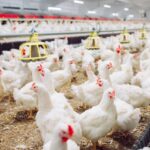Beekeeping is an excellent way for small South African farmers to diversify their income, enhance crop pollination, and contribute to environmental conservation. With rising demand for natural honey and bee-related products, starting a beekeeping venture can be both profitable and rewarding. If you’re considering adding bees to your farm, here’s a practical guide on how to get started.
The first step is to educate yourself about beekeeping. Understanding bee biology, hive management, and honey harvesting is essential for success. Start by attending local beekeeping workshops or training courses, many of which are offered by agricultural colleges or beekeepers’ associations across South Africa. You can also supplement your knowledge with books, online resources, and practical experience through mentorship from an established beekeeper.
Next, choose a suitable location for your beehives. Bees thrive in areas with plenty of flowering plants and clean water sources. Place your hives in a sheltered, sunny spot away from strong winds and human activity. Ensure the site is accessible for maintenance but far enough from foot traffic to avoid disturbing the bees. It’s also wise to check local regulations regarding hive placement and beekeeping practices.
Once you’ve selected your site, acquire the necessary equipment. A basic beekeeping setup includes bee suits, gloves, smokers, hive tools, and at least one Langstroth hive, the most commonly used hive in South Africa. You’ll also need to source your bees, either by purchasing a nucleus colony from a reputable supplier or by capturing a swarm with proper guidance. Start with a manageable number of hives—two to five is ideal for beginners—so you can gain experience before scaling up.
Proper hive management is crucial for maintaining healthy colonies. Regularly inspect your hives to monitor for pests, diseases, and queen productivity. Ensure the bees have enough food, especially during dry seasons or periods of low nectar flow. Providing supplemental feeding with sugar syrup when necessary can help sustain your colonies. Practicing good hive hygiene and monitoring for threats like American foulbrood or Varroa mites will keep your bees thriving.
Finally, when your colonies are well established, it’s time to harvest and market your honey. Use a honey extractor to remove honey from the combs without damaging them. Filter and bottle the honey in clean, food-grade containers. Label your products clearly, highlighting the origin and natural qualities of your farm honey. In addition to honey, consider producing beeswax products like candles or lip balms to diversify your offerings. Local farmers’ markets, health shops, and online platforms provide excellent sales channels.
Starting a beekeeping operation on your small South African farm is a rewarding journey that offers both economic and ecological benefits. By learning the basics, choosing the right location, investing in quality equipment, managing your hives well, and effectively marketing your products, you can build a thriving beekeeping venture that complements your existing farm activities. With patience and dedication, beekeeping can become a sustainable and profitable addition to your agricultural enterprise.
Join 'Farmers Mag' WhatsApp Channel
Get the latest Farming news and tips delivered straight to your WhatsApp
CLICK HERE TO JOIN






